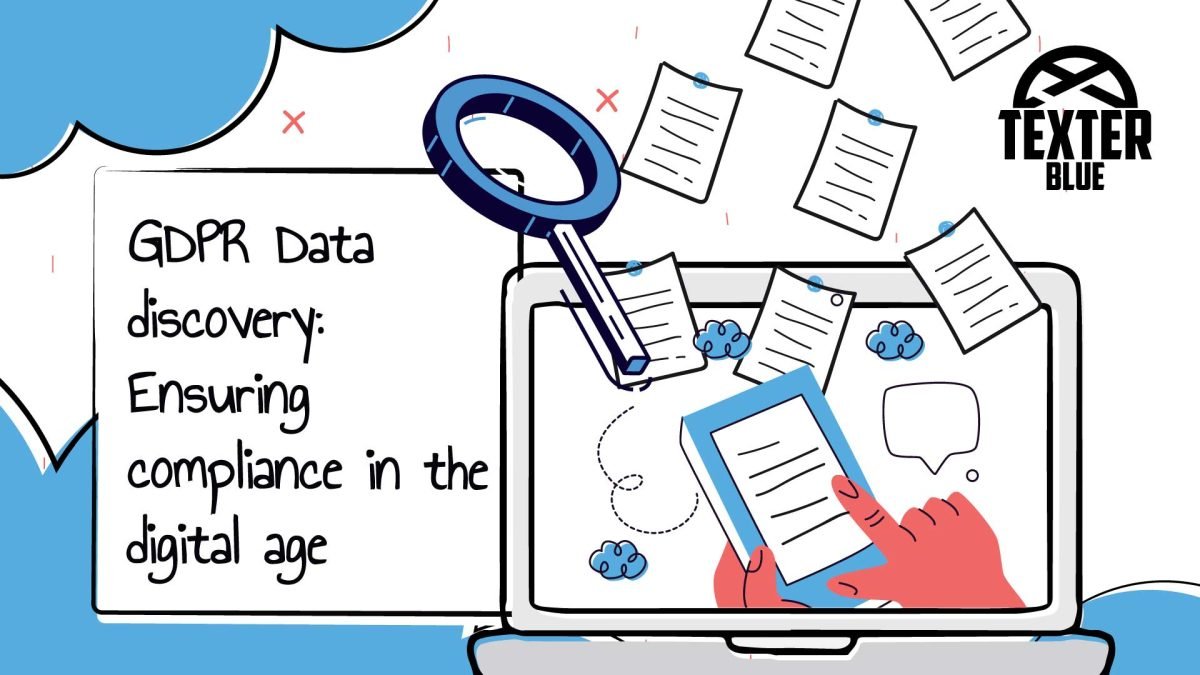With data breaches on the rise and stricter data privacy laws worldwide, organizations must reassess how they manage personal data of their consumers. One crucial aspect of this is understanding “Data Discovery.”
Data discovery involves cataloging the data an organization collects, how it’s utilized, stored, processed, and its movement within and outside the organization.
The importance of data discovery
In today’s digital era, personal data plays a role in almost every aspect of our lives, from social media to banking and various other services. This covers various sensitive information like names, addresses, credit card details, and more, all collected, analyzed, and stored by organizations.
However, many organizations struggle to manage this vast array of data due to outdated methods, making it challenging to understand the complex web of systems and processes involved. With the majority of workloads now migrating to the cloud, tracking data flow within these infrastructures becomes even more challenging.
Data discovery addresses this challenge by helping organizations uncover, analyze, and document personal data across different systems and storage locations. It involves collaborative efforts to generate valuable insights from this data, ultimately enhancing business decision-making processes based on a deeper understanding of consumer information.
Managing data under GDPR
In January 2012, the European Union recognized the need to update data protection for the digital era. After nearly four years of discussion, the European Commission agreed on reforms to strengthen data protection laws.
The current framework, including the General Data Protection Regulation (GDPR), applies to all EU member states and has global reach. This means it affects organizations processing personal data of EU residents, regardless of their location.
To comply with the GDPR, organizations must have a legal basis for processing personal data, which includes obtaining consent, fulfilling contractual obligations, meeting legal requirements, protecting individuals’ vital interests, performing tasks in the public interest, or pursuing legitimate interests.
To effectively manage personal data under the GDPR, organizations should consider following these steps:
- Conducting a thorough audit of all personal data, ensuring it’s correctly associated with the respective data subjects.
- Updating privacy notices to inform users about how their personal data will be handled.
- Respond to data subject access requests within the specified timeframes.
- Keep accurate and up-to-date consent records.
- Establish protocols to identify, report, and investigate security incidents and data breaches.
- Ensuring that any cross-border data transfers comply with GDPR requirements by verifying comparable privacy safeguards in foreign destinations.
- Maintain detailed records of data processing activities to demonstrate compliance.
5 ways that data discovery can help
To comply with the GDPR and other global privacy laws, a data discovery tool must have the following basic functionalities.
1) Discover
Most organizations have data in structured and unstructured sets all across the organization, making it difficult for the organization to keep track of data with its correct owners. Data discovery enables discovery of all the data so that an accurate inventory in the form of a centralized catalog can be maintained.
2) Classify
Once data sets have been discovered, they need to be classified as per their sensitivity, types, formats, and risks. This involves classifying data sets using a sensitivity index such as Restricted, Private, and Public. To keep pace with the growth in structured and unstructured data, automation can be used to categorize sensitive data according to data classification policies. This will ultimately enable organizations to enforce appropriate security controls suitable for each data set.
3) Protect
Implementing security controls and encryption of highly sensitive data is essential to help organizations prepare for threats. Organizations must implement effective and compliant security controls keeping into consideration the industry best practices. This will enable organizations to report personal data breaches and security incidents within the stipulated time frames of GDPR.
4) Monitor
Organizations need to quickly identify their highest risk data assets and monitor this data.
5) Compliance
Certain standards need to be fulfilled to comply with global privacy laws. For example, the GDPR requires organizations to maintain updated records of data processing activities. It also requires organizations to conduct data protection impact assessments whenever a particular data processing activity is likely to result in a high risk to the rights and freedoms of data subjects.
Methods for data discovery
Data discovery can be conducted swiftly and efficiently through automated methods. However, before automation became prevalent, organizations relied on manual and semi-automated techniques to discover data. Here are the various methods used by organizations:
Manual – The most straightforward method involves storing data in documents and manually locating these documents when needed.
Semi-automated – Organizations may hire specialists trained in data discovery to assist in locating data. While effective, this method can be costly and challenging due to the need to find qualified technical experts. Additionally, human error remains a concern.
Automated – Modern solutions automate the data discovery process entirely. These solutions conduct comprehensive scans of all data, create catalogs, and identify individuals’ data across all structured and unstructured systems within the organization. Automated data discovery offers significant advantages such as enhanced accuracy and continuous monitoring, ensuring privacy, compliance, and security in the long term.
Texport: Alfresco Exports & Imports by Texter Blue
Introducing a new mindset for upgrades and content transfer, we’ve developed a solution that exports and imports at object level supporting all Alfresco object types and it carries the symbology of true export.
Full Support – Supports content, metadata, relationships, permissions, versions, tags, categories, sites-memberships, and all other repository node relations from a source Alfresco repository to any target Alfresco instance.
Optimized – Multi-threaded tool that leverages low level OS and cloud resources via its close relation with Python, as such it’s fully optimized for export/import throughput, ingestion rates of up to 2800 nodes/sec.
Native S3 – Native S3 support allowing full repository bidirectional transfer from a normal fileContentStore into an S3ContentStore
Clean Data – Move all content or choose to archive or dispose certain areas of the repository – for example the archiving part of the audit-trail to increase database performance.
Record – Keep a record of all exports and imports executed for validation and data quality purposes. It ships with an ElasticShearch integration providing robust dashboards in Kibana for content transfer executions overview.
Cloud Ready – Container friendly and Cloud ready, adding security and backup options in future relations.
A clever digital transformation…
Texport provides the opportunity to implement a clever digital transformation to the way the organisation interacts with their digital content, consolidating and enriching data – tagging, categorising, auto-classification, applying AI – thus increasing efficiency and optimising the investment.
Download here the Texport – Alfresco Exports & Imports – DataSheet:
By submitting you confirm that you have read and agreed with our Privacy Policy.
TML: Texter Machine Learning by Texter Blue
Your content and data are the foundation upon which your business operates, and critical decisions are made. Recent advancements in AI in areas such as image and natural language processing have enabled a whole new level of automatic extraction of information and data analysis that power the automation of key business processes not possible until now.
- Process your data with different AI engines, integrating the results.
- Supports several data formats: images, video, text, etc.
- Generate new content and document versions based on AI results.
- Store extracted information in metadata, enabling further processing and process automation.
- On cloud or on-premises – in case you don’t want data to leave your private infrastructure.
- Compatible with several different ECM providers
- Ability to develop custom AI models to target your specific needs and data.
AI is essential to remain relevant!
The adoption of AI in modern organisations is essential to remain relevant and competitive, optimising efficiency, empowering new business opportunities and freeing critical human resources to specific value-added tasks.
Download here our TML – Texter Machine Learning – Datasheet:
By submitting you confirm that you have read and agreed with our Privacy Policy.
If you’re struggling with your digital transformation, remember… you are not alone in this… Texter Blue is here to help you providing the best results! Make sure you read our news and articles and contact us.

